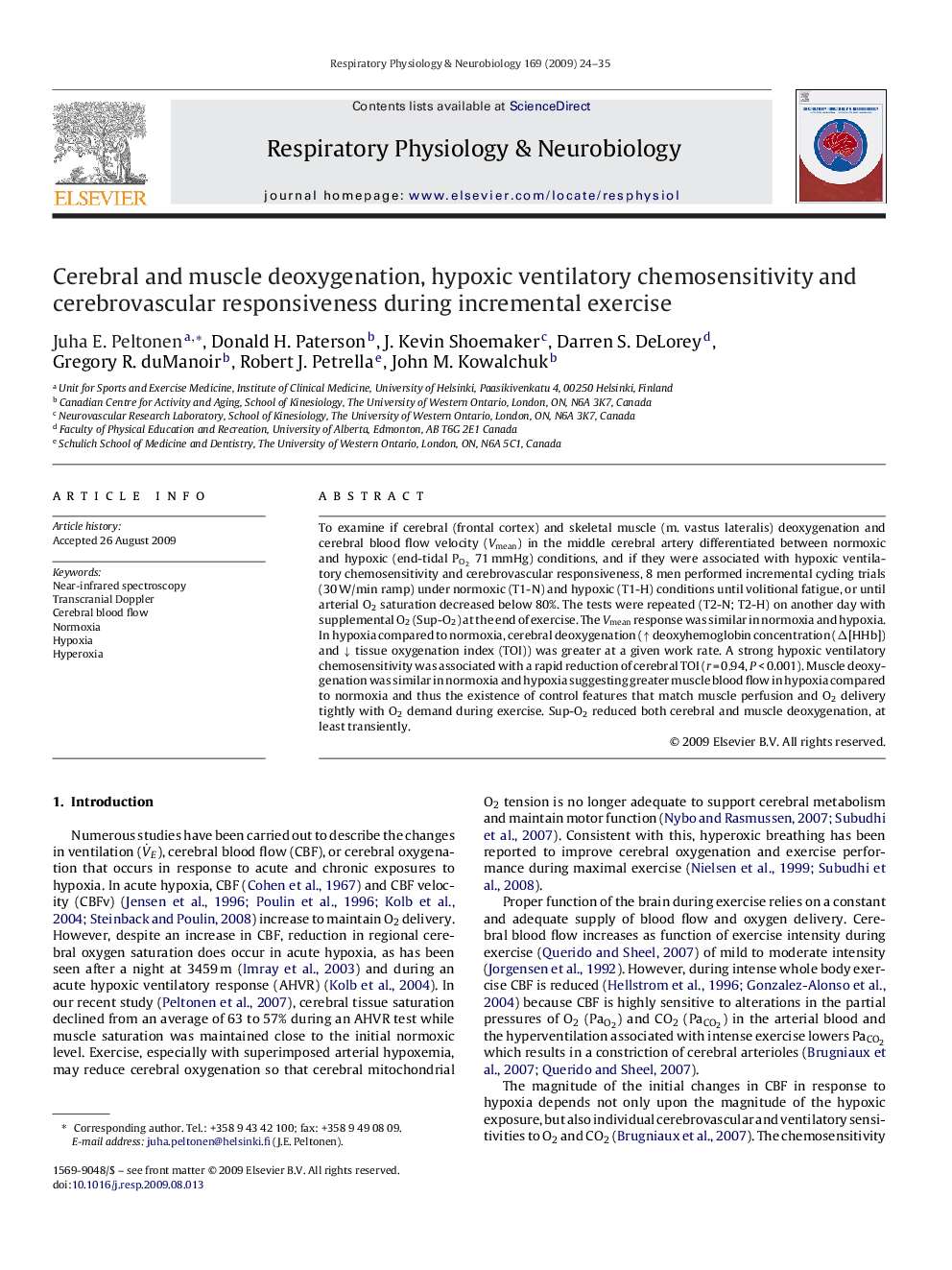| Article ID | Journal | Published Year | Pages | File Type |
|---|---|---|---|---|
| 2847800 | Respiratory Physiology & Neurobiology | 2009 | 12 Pages |
To examine if cerebral (frontal cortex) and skeletal muscle (m. vastus lateralis) deoxygenation and cerebral blood flow velocity (Vmean) in the middle cerebral artery differentiated between normoxic and hypoxic (end-tidal PO2PO2 71 mmHg) conditions, and if they were associated with hypoxic ventilatory chemosensitivity and cerebrovascular responsiveness, 8 men performed incremental cycling trials (30 W/min ramp) under normoxic (T1-N) and hypoxic (T1-H) conditions until volitional fatigue, or until arterial O2 saturation decreased below 80%. The tests were repeated (T2-N; T2-H) on another day with supplemental O2 (Sup-O2) at the end of exercise. The Vmean response was similar in normoxia and hypoxia. In hypoxia compared to normoxia, cerebral deoxygenation (↑ deoxyhemoglobin concentration (Δ[HHb]) and ↓ tissue oxygenation index (TOI)) was greater at a given work rate. A strong hypoxic ventilatory chemosensitivity was associated with a rapid reduction of cerebral TOI (r = 0.94, P < 0.001). Muscle deoxygenation was similar in normoxia and hypoxia suggesting greater muscle blood flow in hypoxia compared to normoxia and thus the existence of control features that match muscle perfusion and O2 delivery tightly with O2 demand during exercise. Sup-O2 reduced both cerebral and muscle deoxygenation, at least transiently.
